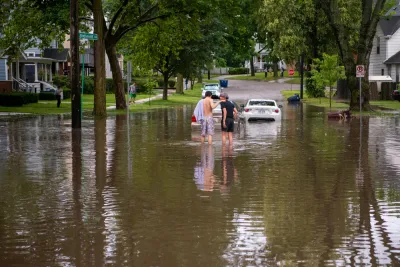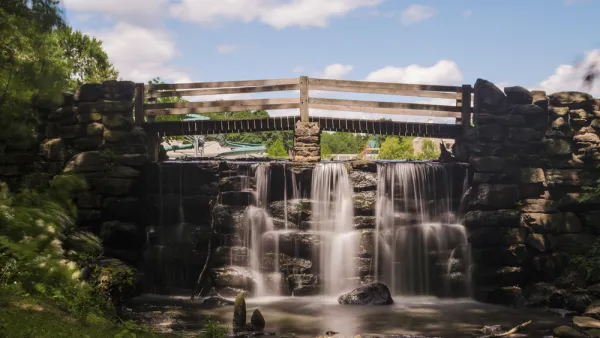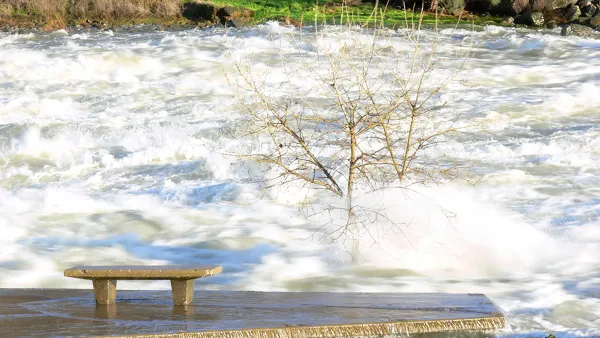The realities of climate change have been on full display in Michigan this summer, and a crusading drain commissioner is pushing for stormwater infrastructure that uses natural features to capture and reuse water during extreme weather.

With memories of massive flooding still fresh from storms this summer, Sarah Grimmer details efforts around the state to increase its stormwater mitigation.
Some in the state are noticing the challenge of stormwater for the first time because the climate in the state is changing. "Since 1986, total annual precipitation across most of Michigan's lower peninsula has increased by more than 10 percent," writes Grimmer.
Now the state and its local and regional planning authorities are facing the challenge of updating its infrastructure—built on old assumptions on how much rain would fall on the state—for the new reality of climate change.
Ingham County Drain Commissioner Patrick Lindemann is cited extensively in the article to describe both the need for new infrastructure, as well as the challenges, like a lack of funding, standing in the way of a more resilient state. Lindemann suggests that instead of simply installing larger drainpipes—a task which many Michigan governments can't afford—a preferable strategy might be to rethink how to handle stormwater altogether.
Instead of funneling excess water in the Great Lakes, Lindemann wants to restore watersheds and create wetlands and ponds. "These projects work to hold rainfall and use it rather than pushing it out," explains Grimmer.
"The drain commissioner's goal is to build around 50 of these projects in Ingham County, he says it will take about 40 to 50 years to get this work done and, in the process, rebuild the county's infrastructure so that it can handle our new environment."
FULL STORY: Massive rainfall events aren't going away in Michigan. Experts say our infrastructure needs to adapt

National Parks Layoffs Will Cause Communities to Lose Billions
Thousands of essential park workers were laid off this week, just before the busy spring break season.

Retro-silient?: America’s First “Eco-burb,” The Woodlands Turns 50
A master-planned community north of Houston offers lessons on green infrastructure and resilient design, but falls short of its founder’s lofty affordability and walkability goals.

Delivering for America Plan Will Downgrade Mail Service in at Least 49.5 Percent of Zip Codes
Republican and Democrat lawmakers criticize the plan for its disproportionate negative impact on rural communities.

Test News Post 1
This is a summary

Test News Headline 46
Test for the image on the front page.

Balancing Bombs and Butterflies: How the National Guard Protects a Rare Species
The National Guard at Fort Indiantown Gap uses GIS technology and land management strategies to balance military training with conservation efforts, ensuring the survival of the rare eastern regal fritillary butterfly.
Urban Design for Planners 1: Software Tools
This six-course series explores essential urban design concepts using open source software and equips planners with the tools they need to participate fully in the urban design process.
Planning for Universal Design
Learn the tools for implementing Universal Design in planning regulations.
EMC Planning Group, Inc.
Planetizen
Planetizen
Mpact (formerly Rail~Volution)
Great Falls Development Authority, Inc.
HUDs Office of Policy Development and Research
NYU Wagner Graduate School of Public Service





























